
Deep Sea Creatures
Wildlife
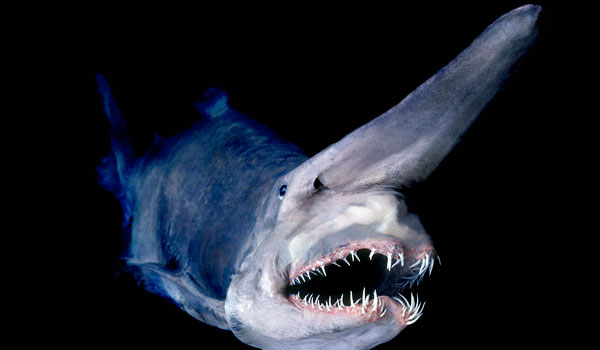
852 views
0 likes
You will need to sign in before you can comment or like.
We know more about the moon than our own oceans. Only
5% of it has been yet explored. It is even tougher to
reach the lower depths of the oceans, even then, scientists find all sorts of unusual, rare lifeforms
thriving in this habitat of high pressure and darkness.
Goblin Shark
(pictured above)
Spooky as it looks, the goblin shark has electro-sensitive organs (to sense the presence of
their prey) in their elongated, flattened, blade like snouts. They developed these snouts
because of the absence of light in their hunting grounds. These creatures have protruding and extremely delicate jaws that are equipped with long, slender, sharp fang-like
teeth. Also called as ‘living fossils’ as they are unchanged for 125 million years. The fish
appears whitish-pink or greyish-purple with pigment lacking skin.
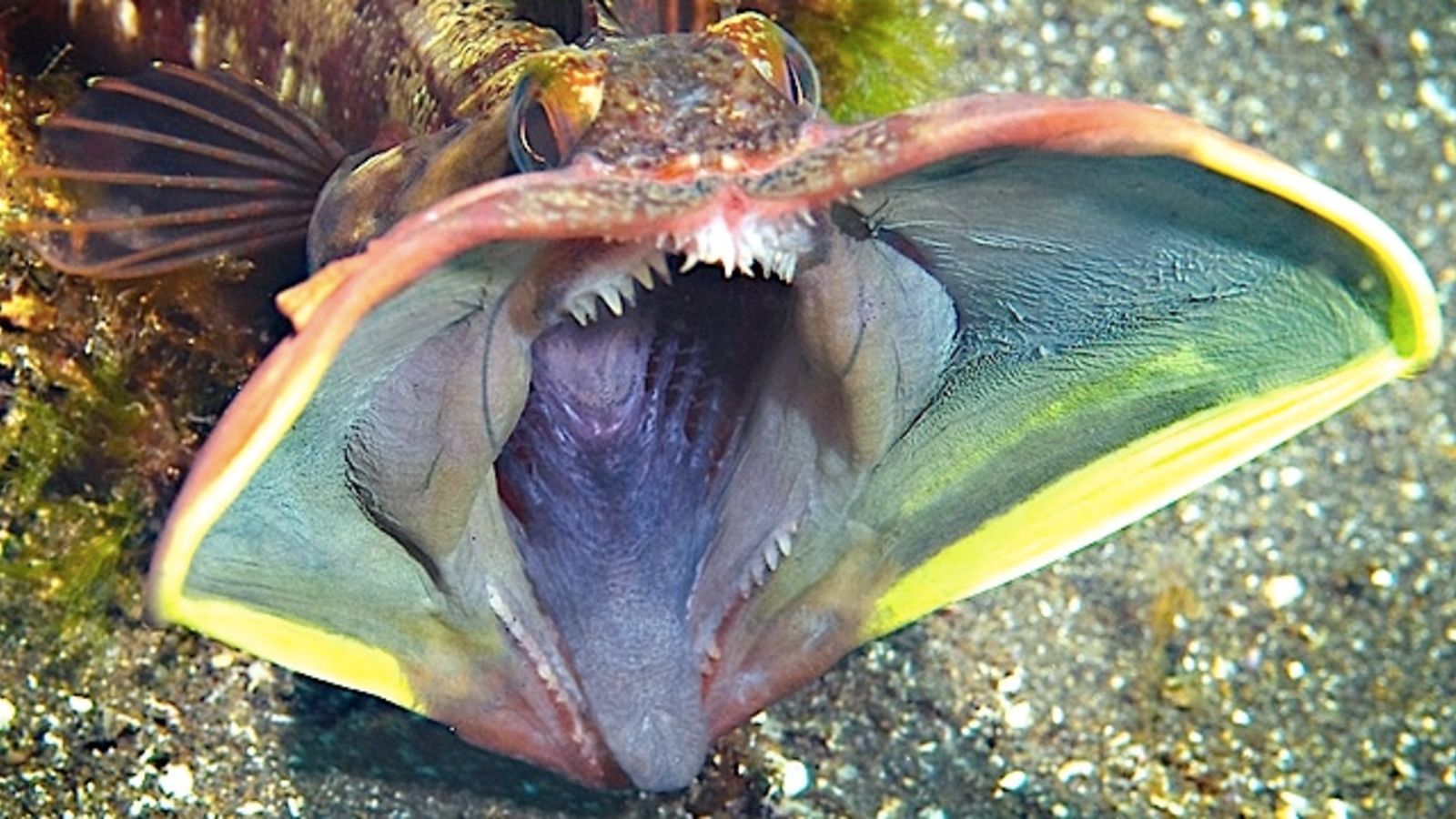 Sarcastic Fringehead
Sarcastic Fringehead
Famous for its gaping mouth it displays to
keep invaders off from its territory, the fringehead is a small fish known best for being aggressively temperamental and for the unusual
way it defends itself. Fringehead can grow up
to 12 inches long, but most are between 3
and 8 inches, having large pectoral
fins and a brownish tinge with green
lips. These creatures have poor eyesight and in case of threat, the
mouth wrestling unfolds! The wrestle
by pressing their highly distended mouths equipped with
needle like teeth against each
other, and the stronger fish becomes dominant.
 Comb jelly
Comb jelly
Comb jellies are gelatinous animals and, as their
name suggests, their special feature is their padding combs generating a combination of colours glowing in colourful patterns. They are 95%
water and have roamed the sea for nearly 700
million years. They swim by beating their combs
rhythmically to push themselves forward. Their
colour bands divide the body into eight symmetrical parts. They can prey on their own species if they do not find enough food. If starving, they shrink in size and stop reproducing.
They use their bioluminescence, that is, in case of predatory threats, they flash brightly to
blind the potential predator allowing comb jellies to escape. They can also camouflage
in dark waters producing red pigment that makes them invisible.
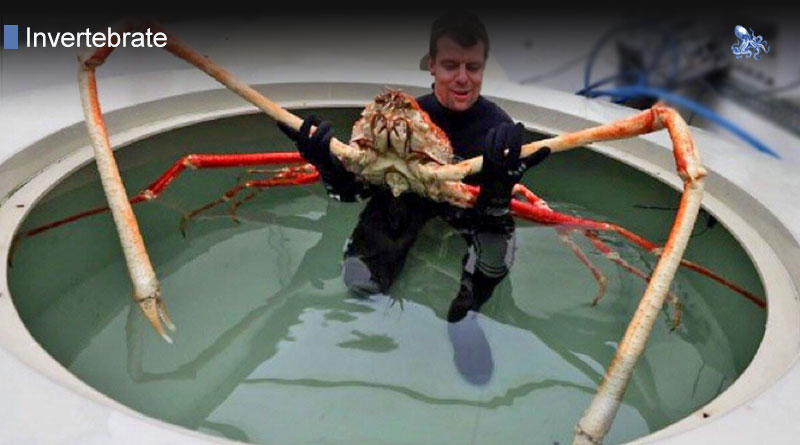 Japanese Spider crab
Japanese Spider crab
Contrary to the spider crab's terrifying
looks, the largest arthropod on earth is
more gentle than it seems, scavenging
on carcasses rather than hunting. This
ten-legged animal measures 5.5 meters from one claw to the other
(although average length is and
height in its natural position is 3 m). The
40 cm wide body is covered with a spiny and tough calcareous carapace. The Spider
crab is second in weight only to the American lobster, weighing around 20kg. The bumpy
orange-white shell also helps in camouflage. Young spider crabs are also known to decorate their shells with crustacean and sponges to further this cause.
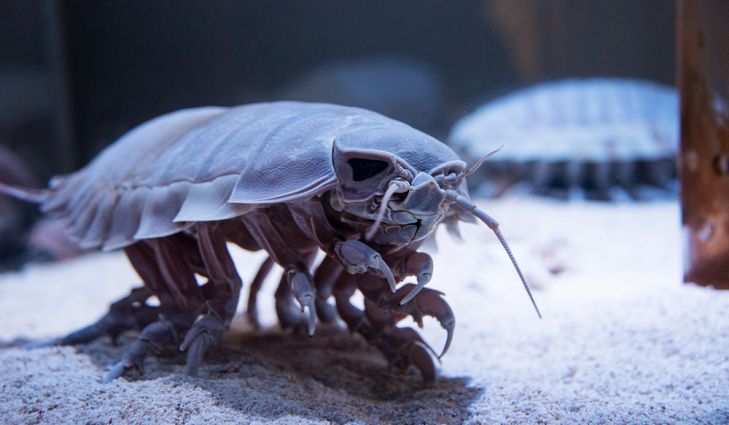 Giant Isopod
Giant Isopod
This monster, an oversized version of the terrestrial pillbug, cannot be seen easily, unless poachers (scientists,
rather) raid the deep sea and bring them on land to
raise them as their pets. They are carnivores and can
stay without food for a long time. Giant isopods have
widely spaced, fixed compound eyes with more than
4000 individual facets and, maybe they might not see
well, they have a pair of
antennae to compensate for that. To grow,
they shed their exoskeletons and have the largest eggs of all marine invertebrates from which
baby isopods come out.
 Frilled Shark
Frilled Shark
Consider this one a living fossil as they are unchanged for
300 million years, since the
dawn of the dinosaurs. This
snakelike deep-water dwelling creature has a ruffled
throat and lizard-like rounded head. It got its name from its frilly appearance of its six pairs
of gills, with the first pair meeting across the throat. Another feature of this shark is its teeth numbering over
300 in all; each tooth is small, with three slender, needle
-like cusps alternating with two cusplets, which indicates its primary prey is slippery squid. The frilled shark
captures prey by bending its body and lunging forward
like a snake. They live in the depths and are rarely
caught.
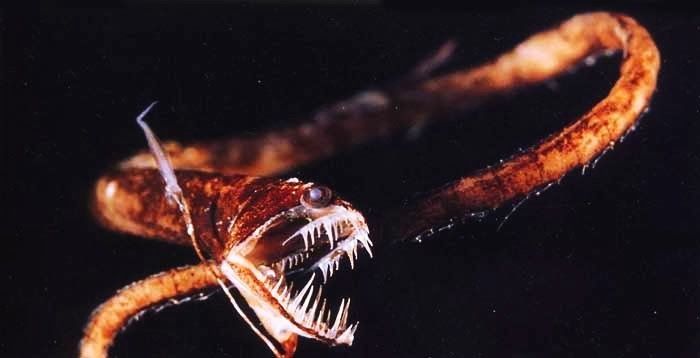 Pacific Blackdragon
Pacific Blackdragon
This horrifying fish can be said as the
frightening hybrid between an angler
and a viper fish, an ambush predator in
all black. Even its stomach is covered
with black tissue to block out any light
that might be produced by bioluminescent animals that they eat. They have a
separate light organ at the end of the long barrel that hangs down from the chin, which
is used as a lure to attract prey. Even though it lives in deep waters, the Pacific Blackdragon receives some sunlight during the day, so the eyes are large and well developed.
Females reach approximately 60 cm, the males being much smaller; having no teeth,
stomach, or chin barrel, and are unable to feed. They never really leave the larval stage
of development, and all of their energy comes from the egg yolk. Scientists believe that
this extraordinary difference between the sexes is to reduce competition for lifesupporting resources that are limited in availability.
 Barreleye
Barreleye
Absolutely alien on first sight, a person has to
see himself to believe that a creature can
have a transparent head and green cylindrical
eyes (Yes, the two structures near its mouth are
not eyes, they are fish equivalents of nostrils).
The barrel like eyes mostly look directly upwards, except when its feeding. Even its brain is
visible through its fluid filled head. The green substance filled eyes are ultra sensitive and
highly capable of differentiating meagre sunlight from bioluminescence.
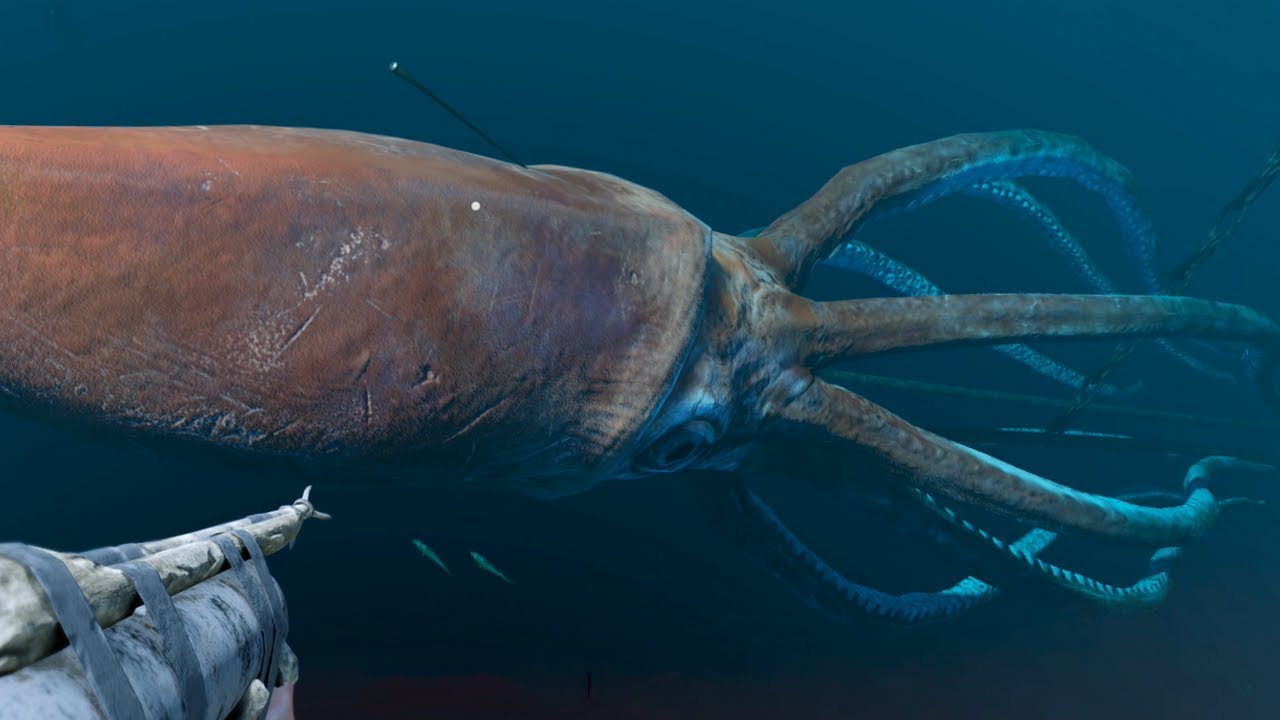 Colossal Squid
Colossal Squid
This massive squid, although shorter,
is three times the giant squid's
weight and holds the record for the
largest living invertebrate, upto 65
feet. The colossal squid's tentacles
reach up to 46 feet and have sharp
hooks, usually tri-pointed. They
weigh at least 550kg and have a
reddish tint and a large fin. Surprisingly, most of the colossal squid's
anatomy has been found already
digested - in whales' stomachs
ready for marine biologists to examine, although occasionally smaller
specimens have been caught.
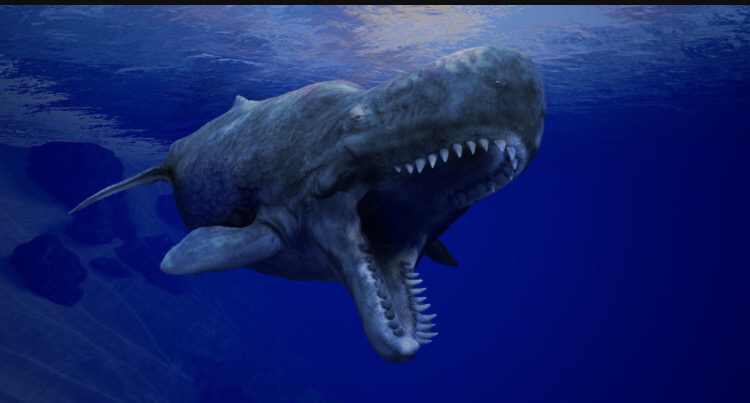 Sperm Whale
Sperm Whale
This enormous blue whale which
feasts on the deadly colossal squid consumes over 2000 pounds of food everyday and
hunts its prey with echolocation. It makes the loudest animal-made clicks, the loudest
heard off the coast of northern Norway which reached 235 (dB re 1 ? Pa), which is equal
to the sound pressure of the Saturn V rocket heard at about one meter distance. This
showed that Sperm whales can stun or even kill their prey with sound. For speed, these
whales can swim 5 to 15kph and when speed up, approximately 35 to 45kph and maintain this speed for about an hour. The biggest threat to this whale (other than colossal
squids) are killer whales, although sperm whales are too big and aggressive for any other
animal to hunt them down. Not only aggression, these marine creatures have the biggest
brain and head in the world, five times heavier than a human's. They store large quantities of a substance called spermaceti in their brain. Spermaceti is a waxy substance that
helps in echolocation that is also used in candles, ointments and cosmetics, which led to
large scale whale hunting in the nineteenth century.
Why did deep some sea animals develop good eyesight or bioluminescence while others didn't?
What other adaptations did they achieve to compensate for this? Research and mail us
the reasons with examples (at least seven) to win a special mention in the next issue.
Comments